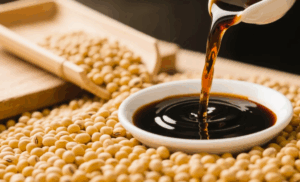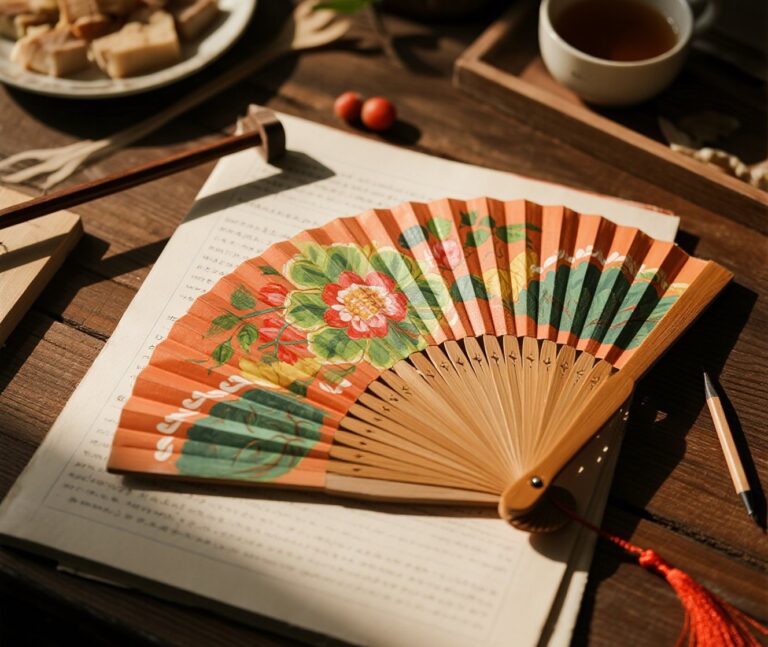目录
ToggleChinese soy sauce has a rich culinary history and a unique production process that distinguish it from soy sauce produced in other countries. At first glance, soy sauce may seem uniform across cultures, given its dark hue and savory umami flavor. However, regional differences in ingredients, fermentation methods, and culinary usage reveal that Chinese soy sauce is distinctly different from its counterparts in Japan, Korea, and Southeast Asia. These differences are not only of cultural significance but also influence flavor profiles, sodium content, and application in cuisine.
Understanding Chinese Soy Sauce: Composition and Classification
- Types of Chinese Soy Sauce
Chinese soy sauce comes in two primary varieties: light soy sauce (生抽) and dark soy sauce (老抽). Each serves different culinary purposes:
- Light soy sauce is thin, reddish-brown, and saltier. It is primarily used for seasoning and marinating.
- Dark soy sauce is thicker, aged longer, and contains added molasses or caramel. It imparts color and a subtle sweetness to dishes.
According to a 2022 report by the China Condiment Association, over 70% of Chinese households use both light and dark soy sauces in their kitchens.
- Production Process and Fermentation
Chinese soy sauce is traditionally brewed using soybeans, wheat, salt, water, and mold cultures such as Aspergillus oryzae. The fermentation period can range from 3 to 6 months, depending on the desired intensity of flavor. The soybeans-to-wheat ratio is usually 1:1, though this may vary slightly among manufacturers.
In contrast, Japanese soy sauce (shoyu) typically contains more wheat than soybeans, resulting in a sweeter, more delicate taste. Korean ganjang, especially the traditional Guk-ganjang, contains little to no wheat and is often saltier.
Comparative Analysis: Chinese Soy Sauce vs. Other Soy Sauces
- Ingredient Variation
| Country | Primary Ingredients | Wheat Content | Saltiness (per 100 ml) | Sweetness |
| China | Soybeans, wheat, salt, and mold culture | ~50% | 6.5-7.5g | Mild (dark soy higher) |
| Japan | Soybeans, more wheat, salt | ~60-70% | 5.5-6.0g | Moderate |
| Korea | Soybeans, minimal/no wheat, salt | <10% | 7.0-8.0g | Low |
| Indonesia | Soybeans, palm sugar, spices | ~30% | 5.0-6.0g | High (Kecap Manis) |
This table highlights the distinct formulation of Chinese soy sauce compared to others, with a balanced wheat content and a moderate salt profile.
- Taste and Aroma Profile
- Chinese soy sauce: Rich, umami-heavy, complex with notes of caramel (especially in dark soy).
- Japanese soy sauce: Balanced, slightly sweeter, lighter umami.
- Korean soy sauce: Sharp, very salty, more pungent aroma.
- Indonesian soy sauce: Thick, syrupy, and sweet due to added palm sugar.

Applications in Cuisine and Culinary Impact
- Chinese Cuisine
Chinese soy sauce is integral to regional cuisines such as Cantonese, Sichuan, and Shanghainese. In stir-fries, soups, and braised dishes, light soy sauce is used for seasoning, while dark soy sauce provides color and depth. A typical Chinese stir-fry recipe may use 10-15 ml of light soy sauce per serving.
- Cross-Cultural Usage
- Japanese cuisine uses soy sauce as a dipping sauce for sushi and sashimi, where its subtle sweetness enhances raw fish.
- Korean dishes like Guk (soups) and Namul (vegetable sides) rely on their own ganjang, which has a cleaner, saltier taste.
- Indonesian cooking uses Kecap Manis in stews and barbecues, contributing both umami and a caramelized sweetness.
The adaptability of Chinese soy sauce in fusion dishes has also been growing. Chefs worldwide are incorporating it into Western-style marinades and even desserts, capitalizing on its umami complexity.
Nutritional Profile and Health Considerations
- Sodium Content
On average, Chinese soy sauce contains 6.5 to 7.5 grams of sodium per 100 ml, which is slightly higher than Japanese variants but lower than traditional Korean ganjang. Consumers aiming to reduce sodium intake often seek low-sodium Chinese soy sauce alternatives, which have about 40% less sodium, i.e., around 4.2 grams per 100 ml.
- Amino Acid and Protein Content
The amino acid nitrogen content—a quality marker—of naturally brewed Chinese soy sauce ranges from 0.8% to 1.2%, which is similar to or slightly higher than its Japanese counterpart. Higher amino acid levels correlate with stronger umami flavor.
Market Trends and Global Expansion
- Export and Consumer Demand
According to the 2023 report by China Customs, Chinese soy sauce exports reached over 220,000 tons, with growing markets in North America, Europe, and Southeast Asia. Brands like Lee Kum Kee and Haitian have become household names in many global kitchens.
- Consumer Preferences
In the West, light Chinese soy sauce is often preferred for its versatility.
Food industry applications are increasing, with Chinese soy sauce being used in plant-based meats and snack seasoning due to its ability to enhance savory flavor without meat.
Conclusion: More Than Just a Condiment
There is indeed a significant difference between Chinese soy sauce and soy sauces from other countries. These differences stem from unique fermentation techniques, ingredient ratios, and intended culinary uses. Chinese soy sauce, with its well-balanced flavor, has carved a global presence while retaining its traditional character. Whether used in authentic Chinese dishes or modern fusion cuisine, its role is both cultural and functional—marking it as more than just a condiment but a vital element of gastronomic identity.
As global tastes continue to evolve, Chinese soy sauce stands as a versatile and complex ingredient, bridging culinary traditions and innovations alike.
0








